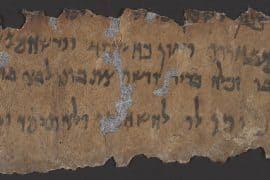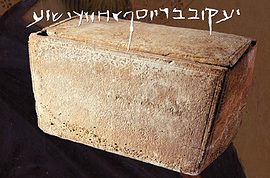Few Bible students realize that some of the key texts in the Hebrew Bible about the “wilderness” or “desert” are specific references to what is called in Hebrew, the “Arava,” the rift valley that runs down to the Dead Sea–the lowest spot on earth–all the way into Africa. For example, here is a literal translation of Isaiah 40:3–quoted in the opening verses of the gospel of Mark, our earliest New Testament gospel, and the banner verse for the Qumran Dead Sea Scroll Community and their whole understanding of their mission and purpose:
A voice cries: “In the desert prepare the Way of Yahweh; Make straight in the Arava a highway for our God (Isa 40:3).
As it is written in Isaiah the prophet . . .”the voice of one crying in the wilderness: Prepare the way of the Lord, make his paths straight” (Mark 1:3).
They shall separate from the session of perverse men to go to the wilderness, there to prepare the way of truth, 14 as it is written, “In the wilderness prepare the way of the LORD, make straight in the desert a highway for our God” (Community Rule: 1QS 8:13)
Both the group that produced the Dead Sea Scrolls and the John the Baptist/Jesus movement looked upon this verse as their basic “Call” to prepare the Way for the end of the age–which they believed was shortly to unfold. This is the beginning of what we call apocalyptic, messianic, eschatology, in the late 2nd Temple period–that flourished from the late second century BCE down to the Roman destruction of Jerusalem and the Fall of Masada (66-73 CE). Much of the focus of my 40+ year research career as been trying to understand these various apocalyptic forms of Judaism as they emerged from this pivotal period.
Last week I ended my tour of Israel that I call “Walking the Ancient Paths,” (or for shorthand “Tracking Jesus”) at biblical Tamar–deep in the Negev south of the Dead Sea. In the first millennium BCE, Tamar as the southernmost city of the Land of Israel. Its ruins have been excavated and it is one of the most important archaeological sites in Israel–usually overlooked by tourists who are dong the standard tour circuit. You can find it on most modern Bible maps–and on Google maps it is Ir Ovot near Ein Hatzeva. I made this video my last evening in the desert, before flying back to the USA. At sundown in the desert the flies come around to make a final visit to their human hosts–but other than that intrusion the silence of the place is truly marvelous unmatched that touches the soul. And yes, I hope you enjoy the playful cartoon trailer as an introduction!









Comments are closed.